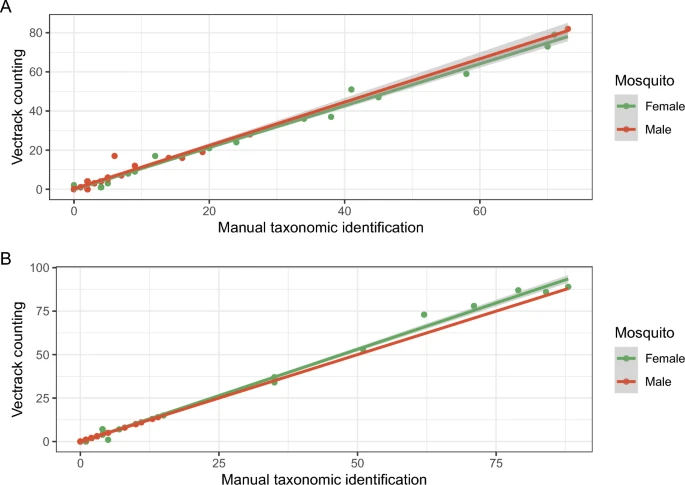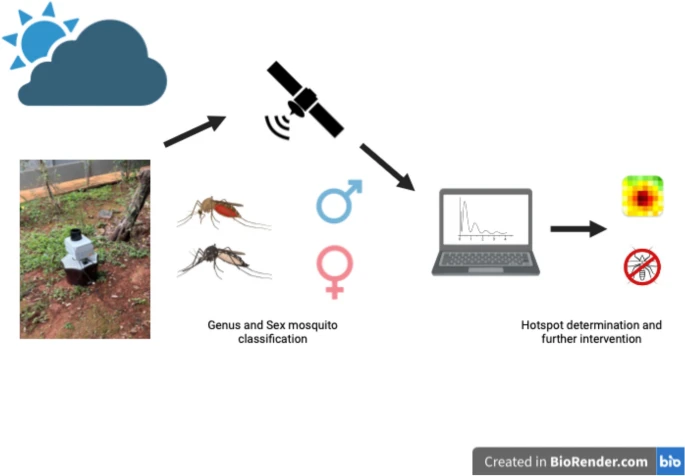In a recent study conducted in Brazil by researchers from the Instituto Oswaldo Cruz, the E4Warning project successfully deployed smart traps with the VECTRACK sensor developed by IRIDEON, to improve mosquito surveillance in urban settings. These smart traps, equipped with AI and IoT technologies, have been tested in two Brazilian cities—Rio de Janeiro and Brasilia—where they demonstrated high accuracy in identifying mosquito species such as Aedes aegypti and Culex quinquefasciatus, both key vectors for diseases like dengue, Zika, and chikungunya.
Over a year of field testing, the traps showed a remarkable 99.8% accuracy in distinguishing target mosquito species from other insects and a 93.7% accuracy in differentiating between the two genera of mosquitoes. The smart traps collected data on 9,151 insect flights, of which 1,383 were mosquito vectors.
These findings indicate the potential of the E4Warning tool to provide real-time monitoring and classification of mosquitoes in areas with high vector-borne disease risks: by the end of September 2024, over 9.5 million dengue cases had been reported in Brazil. In this context, the data gathered from the smart traps could be instrumental in aiding public health authorities to make timely interventions, such as targeted vector control measures, enhancing the preparedness and response to mosquito-borne disease outbreaks. The successful implementation of the IRIDEON smart traps in Brazil showcases how cutting-edge technologies can revolutionize mosquito surveillance, making it faster, more accurate, and less reliant on manual labor.
The paper has been published in the Parasite & Vector journal: Njaime, F.C.B.F.P., Máspero, R.C., Leandro, A.d., Maciel-de-Freitas, R. Automated classification of mixed populations of Aedes aegypti and Culex quinquefasciatus mosquitoes under field conditions. Parasites Vectors 17, 399 (2024).
It can be consulted at the following link: https://parasitesandvectors.biomedcentral.com/articles/10.1186/s13071-024-06417-z
It can also be founded in the E4Warning Zenodo community: https://zenodo.org/records/13868673


